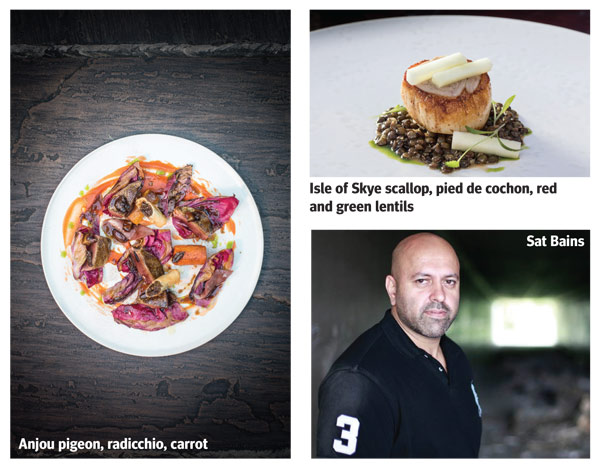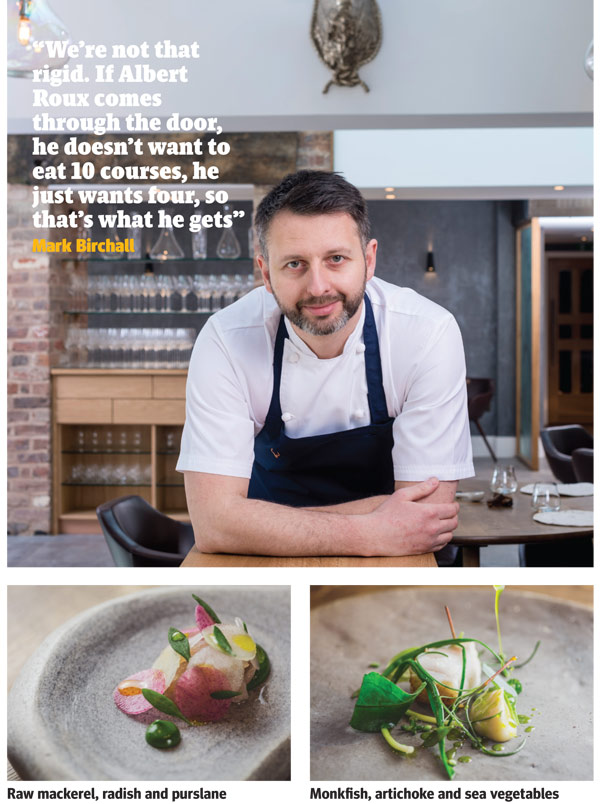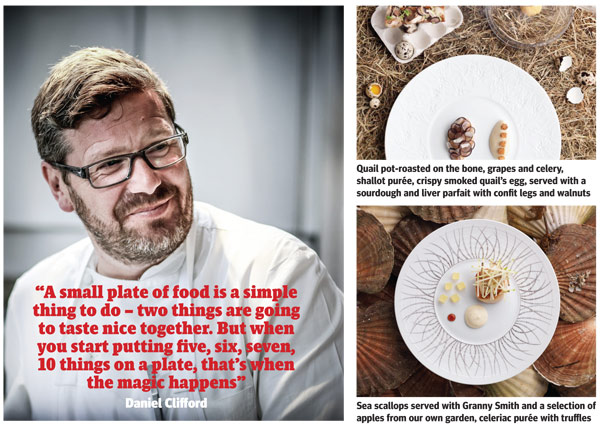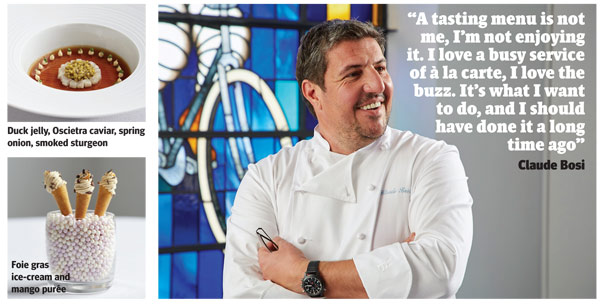Tasting menus: the end of an era?
Over the past decade or so, tasting menus have become synonymous with fine dining. In the early 2000s, only a handful of British chefs â" Heston Blumenthal, Sat Bains, Gordon Ramsay â" offered them, inspired by trips to elBulli and the French Laundry and by kaiseki cuisine in Japan. Now youâll find them the length and breadth of the UK, from Aizle in Edinburgh to Pascere in Brighton.
But recently, there has been something of a backlash against the multi-course format. A number of chefs, including Daniel Clifford at Midsummer House in Cambridge, Simon Jewitt at Norse in Harrogate, and Richard Turner at the now closed Turners in Birmingham, have announced they are abandoning them altogether or introducing an à la carte alongside. Has the tasting menu had its day?
Luxury of choice
âThe feedback from our guests is that people want choice,â says Clifford, who announced in January that his previously tasting-menu-only two-Michelin-starred restaurant would return to serving à la carte menus. âMy restaurant is outside London, and Iâm relying on locals to fill it on Tuesday, Wednesday and Thursday nights. If the menu hasnât changed in a month, theyâre not going to come back.â
At Norse, Jewitt says heâs âflipfloppedâ between various menu configurations before landing on his current offering of a 6/6/3 à la carte alongside a £59 10-course tasting menu. âPeople are used to that starter/main/dessert format and theyâre much more comfortable with it. Itâs just easier to give people what they understand."
Even the most experienced and discerning diners appreciate the familiar à la carte format. Restaurant critic Andy Hayler, who has eaten in every three-Michelin-starred restaurant in the world, avoids tasting menus if he can.
âI usually go à la carte as I can choose dishes and ingredients I am most likely to enjoy. I donât necessarily want a lengthy, sometimes seemingly endless, menu experience,â he says.
But Mark Birchall at Michelin-starred Moor Hall in Aughton thinks longer format menus donât have to mean less customer choice. He has a five-course menu for £70 and an eight-course for £105. âI donât think of our menus as tasting menus,â he says. âThey were called tasting menus when they were served alongside an à la carte as a little taste of everything.
âWeâre not that rigid. If Albert Roux comes through the door, he doesnât want to eat 10 courses, he just wants four, so thatâs what he gets. If you clearly donât want something or youâre really not into it, weâd just rather look after you the best we can.â
Clifford also believes that tasting menu-only kitchens are at risk of producing ârobotsâ. He says: âOne chef is in charge of one or maybe two dishes, so Iâm teaching that chef consistency but not passion. When I look at the chefs that have come out of my kitchen, in the first 10 years we had Matt Gillan, Mark Poynton, Tim Allen and Elwyn Bowles. Thereâs six or seven amazing cooks who went through the experience of cooking to order, and thatâs how we won two Michelin stars.â
Birchall says that his menus give the brigade plenty to get their teeth into. âIf youâre on the sauce section, youâre roasting ducks, youâre cooking fish, youâre searing scallops â" there is an array of skills. When youâve got lots of different dishes that are equal to an à la carte-sized menu, I canât see how that can affect skills.â
For Sat Bains, who only serves seven- and 10-course (£95 and £110 respectively) tasting menus at his two-Michelin-starred eponymous restaurant in Nottingham, itâs not just about the number of dishes, but the way they are cooked, as well as how often the menu changes: âYou have a tasting menu thatâs cooked to order with 12 dishes, and we change 15%-20% of it every two to three weeks. Each section is doing different dishes and learning different aspects, and youâre trying to create a culture where each of your chefs is multiskilled enough to jump onto another section. Itâs my obligation to train my chefs to a very high standard so that they go off as capable chefs, not one-dimensional ones.â
Tasting menus can also impact working hours. âIf a check comes on for a tasting menu at 9pm and itâs a three-and-a-half-hour experience, the chefs wonât leave until 1am,â says Clifford. âIf someone comes in and has a three-course à la carte menu at 9pm, the place should be wrapped up by 11.30pm. Thatâs a massive difference. We canât carry on making chefs work a 90-hour week; we just canât do it.â
Short and sweet
But as restaurant writer Chris Pople of the influential Cheese and Biscuits blog points out, tasting menus donât have to be marathon events. âThere are some restaurants doing really good, really cheap tasting menus. Picture in Londonâs Fitzrovia does one for £35 thatâs incredible. Itâs six courses and a glass of Champagne and thatâs the kind of tasting menu thatâs great â" itâs not 19 courses and itâs just like a normal meal.â
An obvious reason for tasting menusâ loss of attraction may be staring the industry in the face. âI rarely have tasting menus because I know the chefs donât give a fuck about them,â says Bains, who says he spends tens of thousands every year on menu research and development. âWhen you look at a true tasting menu in terms of balance, seasonality and overall experience â" the physical journey you send someone on, with texture, taste and temperature â" thereâs probably only a couple of handfuls of restaurants in the world that do that well.â
But done well, tasting menus can be money-spinners. Clifford says that making Midsummer House tasting-menu-only was the best thing he ever did financially, with a set menu and full reservations book simplifying ordering and minimising waste. Moving away will be a âmassive riskâ, he believes.
âItâs a £350,000-£400,000 investment to make it work,â he says. âWeâre doubling the size of the kitchen to do à la carte because you need space. Weâre putting a brand new larder area in as well as an amuse-bouche and canapé section.â
At Bibendum, Claude Bosi says heâs taking a potential profit hit by offering a 6/6/6 à la carte alongside a £120 six-course tasting menu. âItâs harder to get the margin right because of the amount of choice weâve got, the quality of the produce and the size of the portions. Itâs not more beneficial on the business side.â
So why do it? For Bosi, itâs partly about greater customer satisfaction, but also more personal reasons. âAt Hibiscus, people were coming to tick the box, but I want Bibendum to be a restaurant like Le Gavroche that is still around in 50 yearsâ time. I like à la carte, to be honest. A tasting menu is not me, Iâm not enjoying it. I love a busy service of à la carte, I love the buzz. Itâs what I want to do, and I should have done it a long time ago.â
Clifford agrees: âA small plate of food is a simple thing to do, two things are going to taste nice together. But when you start putting five, six, seven, 10 things on a plate â" what an à la carte dish is â" thatâs when the magic happens.â
It may seem surprising that a debate about two menu formats could generate such strong views. As Clifford says: âHow bizarre is that â" by going back to à la carte, youâre shocking the industry?â Menus can represent the creative spirit and core beliefs of a chef and are the windows to the very soul of a restaurant. And thatâs surely got to be something worth arguing about.
Tasting menus: the pros and cons Pros
- Gives the customer a complete gastronomic experience, showcasing the full variety of produce and cooking techniques.
- A more straightforward kitchen service, with the chance for chefs to perfect the preparation of dishes.
- Simplified ordering, where chefs know exactly what produce and how much of it to order each day/week.
- Smaller portions mean increased profits from higher-cost produce, including premium fish and meat.
- Reduces waste in the kitchen â" fewer unsold and less popular items end up as the staff meal or in the bin.
- Increased revenue through the sale of paired wine packages.
Cons
- Tasting-menu-only restaurants may be perceived as only special occasion destinations, leading to regular customers returning less frequently.
- The price point may alienate customers.
- The format may turn off those diners looking for a more casual experience.
- There are potential additional costs in research and development to create a commercially successful menu in a highly competitive market.
- The kitchen brigade may be less stimulated if tasting menus are rarely changed.
- Tasting-menu-only restaurants may not help younger chefs develop a wide enough skill set to prepare them for à la carte cooking, and therefore limit their future job options.
Videos from The Caterer archives






















